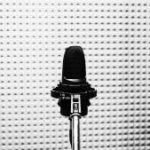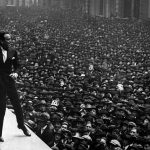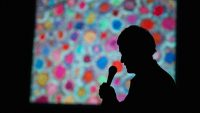Master Public Speakers’ Five Rules For Powerful Openings
Looking for the “Call me Ishmael” of your next presentation? Or just scouring past TED Talks for inspiration? You may not need to. The most powerful public speakers don’t start off each of their talks with a straightforward formula—that’s what keeps them so dynamic. Instead, there are a few key principles to keep in mind for building an opening that will catch and hold your audience’s attention. Here are five of them.
1. Relevance Beats Significance
Many speakers go for the big wind-up opening—rhapsodizing the new, or going on and on about the grand sweep of history. They want their audiences to see the context before they make their point, and that’s understandable. But it usually makes for a bad opening. While that approach is great for presenting a legal argument or a scientific paper, most business audiences have no patience for it. You need to get to the point immediately and demonstrate that it’s relevant—all within the first 30 seconds.
A VP of public relations for a top defense company once told me often gave people 30 seconds to keep his attention before walking out of their presentations. I went with him to a meeting, and sure enough, he left after 30 seconds! While your audiences aren’t going to be so brutal as to physically leave, they won’t hesitate to check out mentally. So focus on making the connection right away, not establishing the context.
2. There’s A Difference Between Humor And Jokes
Ever seen a great comedian live? Of course, you noticed that there was an opening act to “warm up” the audience. A cold start requires amazing talent, timing, and the right conditions—so be careful. Using humor to kick off a Monday morning meeting may not be the best strategy. But at a cocktail party, humor can be a terrific touch.
And there is a difference between humor and jokes, though it’s something many speakers miss. Jokes require precision and practice. In his book Born Standing Up, Steve Martin explains how he spent years practicing his timing as a magician before he became one of the great stand-up comedians of all time. So don’t gamble with jokes that require expert timing.
A story with the right touch of amusement can be very effective, but pick your material wisely. When you’re are a leader, for instance, it’s usually best to stay away from self-deprecating stories, where you share a humiliating experience of yours. While people may laugh at someone slipping on a banana peel, your audience wants to feel proud of you as a leader—they don’t want to see your image tarnished, least of all at your own hands.
3. Routine, Routine, Routine
When baseball superstar Mike Trout of the Los Angeles Angels steps up to bat, he has a routine. I was lucky enough to have seats right behind home plate for one of his games, and I studied how he concentrated on making a few specific moves before he held up his bat—every time.
When you stand up to speak, you, too, a need routine. If you’re at a podium, for instance, rest your hands lightly on its sides, put one foot slightly ahead of the other, and release your breath to a precise four-count. Whatever your approach, you need to establish a physical routine before you begin, this way you can be ready to tap into audience’s attention and energy right away.
4. Not All Quotes Are Created Equal
Some quotes read well, but when you say them out loud, they just don’t work. The sentence is too long. The sounds don’t flow together. The rhythm doesn’t work.
For example, quoting Hamlet—”To be or not to be”—can be a great beginning to a presentation inspiring your team to make a big decision. The quote is super familiar, it’s short, rhythmic, and sounds strong. After all, it was meant to be spoken.
On the other hand, don’t choose a quote like this:
Far out in the uncharted backwaters of the unfashionable end of the Western Spiral arm of the Galaxy lies a small unregarded yellow sun. Orbiting this at a distance of roughly ninety-eight million miles is an utterly insignificant little blue-green planet whose ape-descended life forms are so amazingly primitive that they still think digital watches are a pretty neat idea.
This beginning to The Hitchhiker’s Guide to the Galaxy worked well for Douglas Adams, but it’s far too complex for a presentation opening. Choose your quotes based not on how much you like them—or how good they sound in your head—but by how well they sound when spoken out loud.
5. Make Sure You’ve Got Good Reason For Glitz
Last week, my client from a large medical device company described the best opening to a presentation he’d ever seen. He told me the audience was ushered out of the auditorium, and then the leadership team parachuted down in front of them. Was it way over the top? Of course! And that was the point.
But spectacles can quickly devolve into distracting gimmicks. Before trying out your “creative” opening, ask yourself: What’s the cost? What’s the value? Are you going for a memorable moment or a meaningful message?
Fast Company , Read Full Story
(5)













